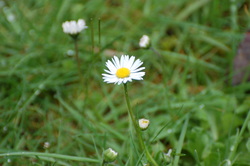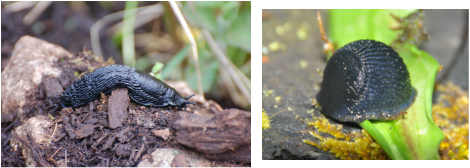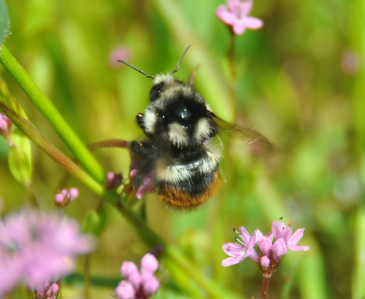 Bur Chervil (Anthriscus caucalis) is an introduced weed, similar to the garden herb, It is an aggressive colonizer in the meadow. It is a handsome plant, with fine, fern-like foliage with a strong smell when bruised or cut. The flowers are small and white. The plants here show an amazing diversity of sizes, from just a few inches high on trampled or drier sites with thin soils to robust plants over a meter high on moister, deeper soils. For the most part it seems to behave as a biennial here, forming a basal rosette the first year and flowering in the spring of the second year.
0 Comments
One of the more common bumble bees on Leaning Oaks is Bombus bifarious...or at least one that is relatively easy to identify as it buzzes and bumbles about. The range of this bee is Alaska to California, from the Rockies westward with a few occurrences on the taiga ad on the plains. The other English name that I found is "Two Form" -presumably because of the two divergent colour patterns that are closely related based on DNA evidence.
 English Daisy (Bellis perennis) is a widespread exotic weed most commonly seen in lawns and other disturbed areas. There is can form impressive sweeps of white or pale pink in the early spring when it blooms. This is yet another weed that can be used in salads, although the leaves are best used when young, they become bitter as the plant ages. The word "daisy" is thought to come from the words "day's eye" in reference to the habit of this plant opening the flower in daylight and closing up again on cloudy days, or at night.  British Columbia has 5 species of Taraxacum, and this one, Taraxacum officinale is the commonest. Of the five, two are introduced and three are native. Here the main bloom of the species is late April or May, depending on the year, but flowers can pop out at any time, including warm spells in the winter. Dandelion is as well known for their seed heads as they are for their flowers and the parachuting seeds are amazing to watch on a windy day as the float soar away to disperse the seeds. The name is from the French "dent de lion" in reference to the jagged tooth leaves.  This large introduced slug is a familiar site for anyone that spends time outdoors on southern Vancouver Island. The species is introduced from Europe and can be a major garden pest. For many years we had very few of these at Leaning Oaks, but in the spring of 2013 the numbers increased greatly and the density of this species in the meadow and the garden was amazing. There are a number of common names used for this species, and Chocolate Arion undoubtedly refers to a brown morph of this species. Reddish colour forms (hence the Latin name Arion rufus) also exist but the commonest colour we see here is the jet black "Licorice Slug".  This early flying, distinctive butterfly has one generation a year and generally flies between March and May. The female Anthocharis sara in the photo is nectaring on Small-flowered Fringecup (see 80.). The dark line at the base of the orange goes across the entire wing on the males, whereas this one just goes a little ways across. Bizarrely, there are more white females in populations that are found nearer the ocean, and there are more yellow, further from the ocean. Tower mustard (Turritis glabra) is one of the known larval food plant. |
AuthorsTwo biologists on a beautiful property armed with cameras, smart phones and a marginal knowledge of websites took up the challenge of documenting one species a day on that property. Join along! Posts and photographs by Leah Ramsay and David Fraser (unless otherwise stated); started January 1, 2014. Categories
All
Archives
May 2025
|



 RSS Feed
RSS Feed